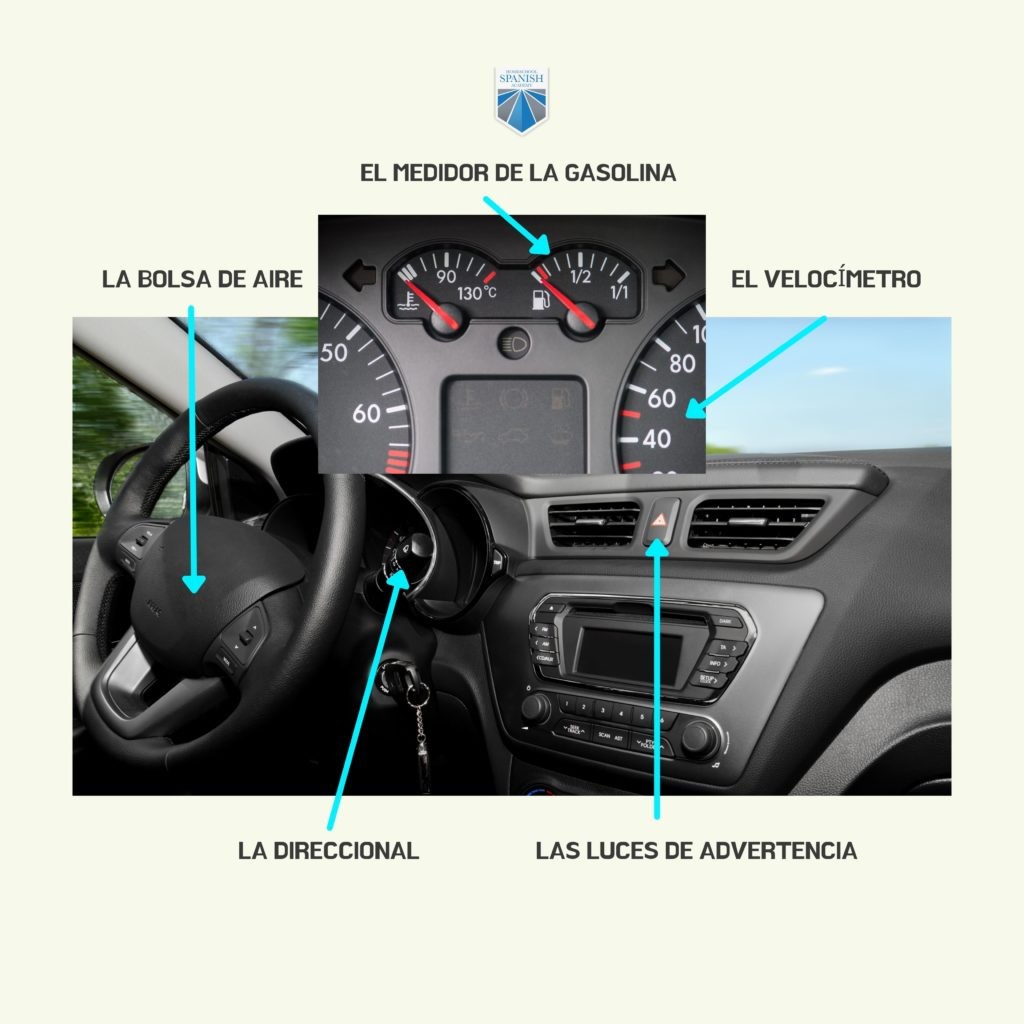Understanding the Names Of Car Parts Inside your vehicle is more than just automotive trivia—it’s practical knowledge that empowers you as a car owner. Whether you’re discussing maintenance with a mechanic, troubleshooting a minor issue, or simply wanting to be more car-savvy, knowing the correct terminology for interior car components is essential. At carparteu.com, we believe in equipping you with the knowledge you need to confidently navigate the world of auto repair and maintenance. Let’s dive into the essential names of car parts inside your car.
Navigating the Cockpit: Essential Interior Car Parts
The interior of your car is designed for comfort, control, and safety. Familiarizing yourself with the names of these parts not only enhances your understanding of your vehicle but also improves communication during servicing or repairs.
| English | Description |
|---|---|
| Steering Wheel | Controls the direction of the vehicle. It’s connected to the steering column and ultimately to the wheels. |
| Dashboard | Located in front of the driver and passenger, housing vital instruments and controls. |
| Instrument Panel | A section of the dashboard that displays crucial driving information like speed, fuel level, engine temperature, and warning lights. |
| Speedometer | Indicates the vehicle’s speed, usually in miles per hour (mph) and/or kilometers per hour (km/h). |
| Tachometer | Measures the engine’s rotation speed in revolutions per minute (RPM), helping to monitor engine performance. |
| Fuel Gauge | Shows the amount of fuel remaining in the tank. |
| Temperature Gauge | Indicates the engine coolant temperature, helping to prevent overheating. |
| Warning Lights | Illuminate to alert the driver to potential issues or malfunctions, ranging from low oil pressure to engine problems. |
| Accelerator Pedal | Controls the vehicle’s speed by regulating the fuel supply to the engine. |
| Brake Pedal | Applies the brakes to slow down or stop the vehicle. |
| Clutch Pedal | (In manual transmission vehicles) Used to disengage the engine from the transmission when shifting gears. |
| Gear Shift | Selects different gears in manual transmissions or drive modes (Park, Reverse, Neutral, Drive) in automatic transmissions. |
| Seats | Provide seating for the driver and passengers. Modern cars feature adjustable seats for comfort and ergonomic support. |
| Seatbelts | Safety restraints designed to secure occupants in their seats and minimize injury in the event of a collision. |
| Rearview Mirror | Provides a view of the area behind the vehicle, aiding in safe maneuvering. |
| Side Mirrors | (Interior controls) Adjustable mirrors located on the doors, offering visibility of the sides and rear of the vehicle. |
| Glove Compartment | A storage compartment built into the dashboard, often used for vehicle documents and small items. |
| Center Console | Located between the driver and passenger seats, often containing the gear shift, parking brake, storage compartments, and controls. |
| Parking Brake (Handbrake) | A brake system used to keep the vehicle stationary when parked, often mechanically operated and located in the center console area. |
| Horn | A sound signaling device used to warn others of the vehicle’s presence. |
| Mats/Floor Mats | Removable coverings placed on the vehicle’s floor to protect the carpet from dirt, moisture, and wear. |
| Air Vents | Adjustable outlets that distribute heated or cooled air throughout the cabin, part of the climate control system. |
| Climate Controls | Systems to manage the temperature, airflow, and humidity inside the car, including heating, ventilation, and air conditioning (HVAC). |
| Sunroof/Moonroof | An optional opening in the vehicle’s roof that allows light and fresh air to enter the cabin. |


Understanding Your Dashboard: The Command Center
The dashboard and instrument panel are crucial for monitoring your car’s health and operation. Recognizing these components can help you react appropriately to warnings and understand your vehicle’s status at a glance.
| Warning Light Symbol | Warning Light Name | Indication |
|---|---|---|
| (!) | Brake System Warning Light | Indicates issues with the braking system, such as low brake fluid or brake wear. |
| (Battery Symbol) | Battery Warning Light | Signals problems with the charging system, potentially the alternator or battery. |
| (Oil Can Symbol) | Oil Pressure Warning Light | Indicates low engine oil pressure, which can cause serious engine damage. |
| (Temperature Symbol) | Temperature Warning Light | Warns of engine overheating, requiring immediate attention to prevent damage. |
| (Engine Symbol) | Check Engine Light | Indicates a variety of engine or emissions-related issues, requiring diagnosis. |
| (ABS Symbol) | ABS Warning Light | Shows a malfunction in the Anti-lock Braking System (ABS). |
| (Seatbelt Symbol) | Seatbelt Reminder Light | Reminds occupants to fasten their seatbelts. |
| (Airbag Symbol) | Airbag Warning Light | Indicates a problem with the airbag system, affecting safety in a collision. |
| (Fuel Pump Symbol) | Low Fuel Warning Light | Alerts the driver that the fuel level is low and needs refueling soon. |
Why Knowing Interior Car Part Names Matters
Being familiar with the names of car parts inside your vehicle offers several advantages:
- Effective Communication: When speaking with mechanics or auto repair professionals, using the correct terms ensures clear communication and reduces misunderstandings.
- DIY Car Maintenance: For those who perform their own car maintenance, knowing part names is crucial for following guides, ordering parts, and accurately diagnosing issues.
- Informed Decision Making: Understanding what each part does and its function allows you to make more informed decisions about repairs, upgrades, and vehicle maintenance.
- Increased Confidence: Familiarity with your car’s interior components can boost your confidence as a driver and car owner.
Conclusion: Become an Informed Car Owner
Mastering the names of car parts inside your car is a valuable step towards becoming a more informed and empowered car owner. At carparteu.com, we are dedicated to providing you with expert knowledge and resources to help you understand every aspect of your vehicle. Explore our other articles and guides to further expand your automotive expertise and ensure you are always in the driver’s seat of your car knowledge.